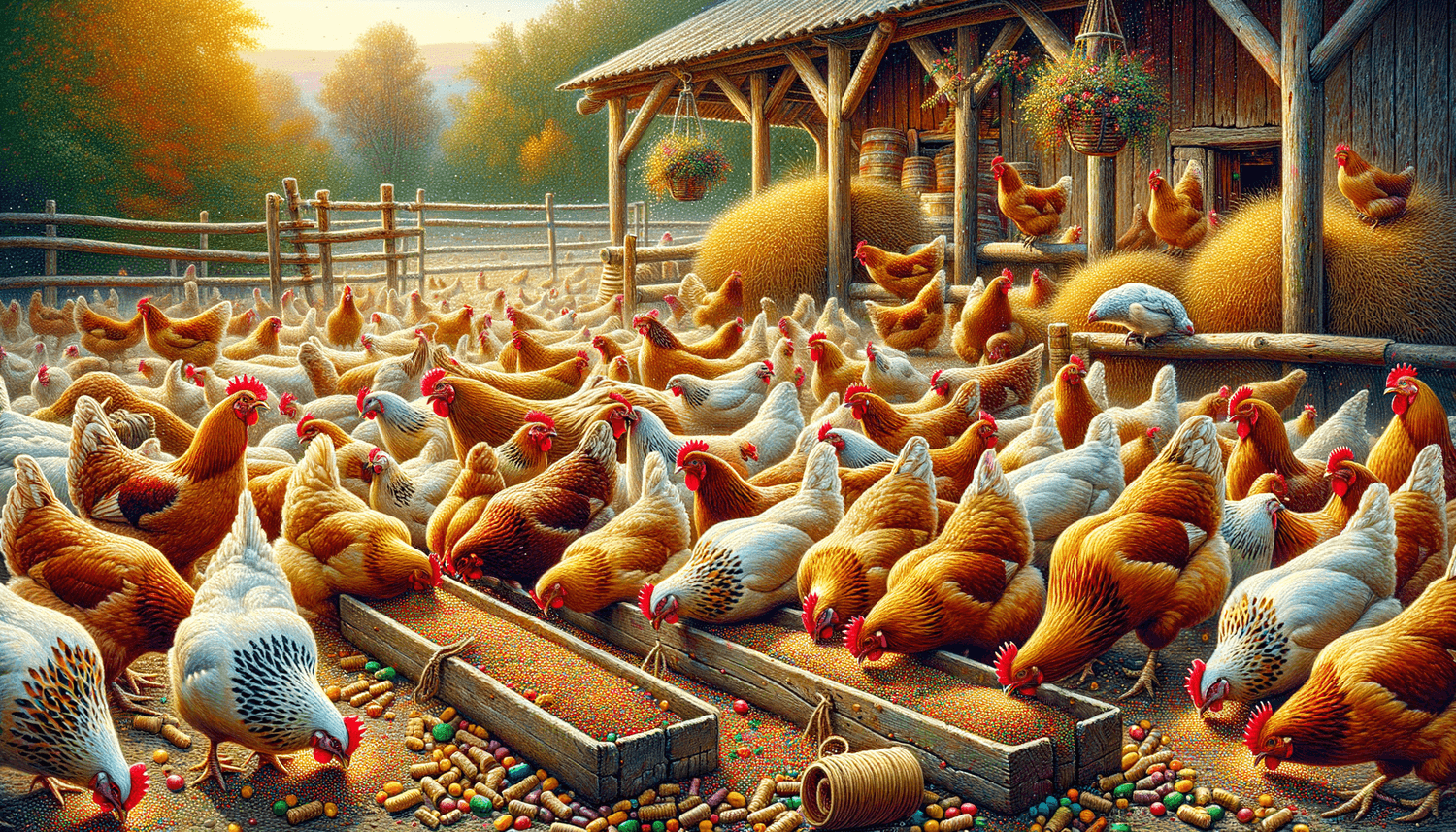If you’ve ever peered over a fence into a backyard chicken wonderland, you’ve likely seen these fine feathered friends clucking away with delight at their scrumptious meals. But did you know that these beautiful beaked beauties can also have a bit of a sweet tooth? In this tantalizing blog post, we’ll explore whether chickens can eat Sweet Feed or not, dive into the importance of a balanced diet, dish out the benefits and risks, survey the nutritional value, and give you a peck of advice on how to prepare this sugary delight for your avian amigos. So, fluff your feathers and join us on this delectable journey into the world of chickens and Sweet Feed!
Can chickens eat sweet feed?
Yes, chickens can eat Sweet Feed, but it should be given in moderation. While Sweet Feed is safe for chickens, it is important to remember that this treat should not replace their primary source of nutrition. A well-balanced diet is essential for maintaining the health and well-being of your backyard flock, so be sure to serve Sweet Feed as an occasional snack rather than a staple.
A balanced diet for chickens
Just like humans, chickens need a balanced diet to stay healthy and happy. It is important for backyard chicken enthusiasts to provide a well-rounded meal plan consisting primarily of a high-quality chicken feed. A complete, nutritious chicken feed should make up around 80-90% of their diet, ensuring that your feathered friends are getting the essential nutrients, vitamins, and minerals they need to flourish and produce delicious eggs.
The remaining 10-20% of a chicken’s diet can consist of treats to enhance their culinary experience. Healthy treats like fresh fruits, vegetables, and even grains such as Sweet Feed can add variety and excitement to their mealtime, while also supplying additional nutrients. Remember, while these treats can be beneficial, they should not take the place of the chicken feed that forms the backbone of your flock’s dietary needs.
Nutritional value of sweet feed for chickens.
Sweet Feed, despite its sugary name, does offer some nutritional benefits to chickens. Generally, this type of feed consists of a mixture of grains and added molasses, which results in a palatable and nutrient-rich product. Grains such as corn, oats, and barley are often used in the formulation of Sweet Feed, providing a source of carbohydrates, proteins, and fiber for the chickens.
While Sweet Feed alone is not sufficient to meet all the nutritional demands of your backyard flock, it does provide some important vitamins and minerals. The molasses component, in particular, is a rich source of iron, calcium, magnesium, and potassium. Furthermore, Sweet Feed’s grains introduce B vitamins and trace minerals to a chicken’s diet.
Hydration is essential for chickens, and while Sweet Feed doesn’t directly contribute to their hydration requirements, it can help in maintaining an effective digestive process. The additional fiber found in Sweet Feed supports proper digestion and can contribute to a healthy gut for your chickens.
Ultimately, Sweet Feed can be a beneficial component of a chicken’s diet when offered in moderation. It offers some key vitamins, minerals, and fiber adding to the nutritional value of their overall meal plan. It is, however, important not to replace a high-quality chicken feed with Sweet Feed, as it won’t cover all the nutritional needs of your backyard birds.
Nutrition table of sweet feed for chickens.
| Information | Description |
|---|---|
| Nutritional Value | Rich in carbohydrates, proteins, fiber, iron, calcium, magnesium, potassium, B vitamins, and trace minerals |
| Suggested Serving Size | Occasional treat, not to exceed 10-20% of the chicken’s diet |
| Safe Feeding Practices | Feed in moderation, while maintaining a well-balanced diet based on high-quality chicken feed |
| Preparation | Offer dry or moistened, and ensure its freshness |
| Potential Risks | Excessive consumption can lead to obesity, nutrient deficiencies, and potential health issues |
| Hydration | While not a direct source of hydration, the fiber content can aid in digestion and gut health |
| Digestion | Provides fiber to support proper digestion and gut health |
| Seasonal Availability | Available year-round |
| Other Benefits | Adds variety to chickens’ diet and can be an enjoyable treat |
Preparing Sweet Feed for your chickens
To serve Sweet Feed as a treat, you can simply offer it dry or moistened, depending on your flock’s preferences. Ensure that you check the freshness of the Sweet Feed before serving it to your chickens, as moldy or spoiled grains can pose health risks. Make certain that feeders or troughs are clean and hygienic, as your feathery friends enjoy their sweet treat.
Storing Sweet Feed
Proper storage of Sweet Feed is important to maintain its freshness and nutritional value. Store Sweet Feed in a cool, dry area, away from excessive heat or moisture. Avoid exposure to insects or pests, as they can contaminate the feed. You can opt for airtight containers or galvanized steel bins to provide a clean and safe storage solution for the Sweet Feed.
Introducing Sweet Feed to your flock
When introducing any new treat, it’s a good idea to do so gradually. Start with small amounts of Sweet Feed and observe your chickens for any signs of digestive issues or changes in behavior. If your flock appears content and healthy, you can then incorporate Sweet Feed more regularly as a treat, keeping in mind to maintain a balanced diet for overall health and wellbeing.
Alternatives to Sweet Feed
If you’re looking for other treats to enrich your chickens’ diet, there are plenty of options available. Fresh vegetables, such as leafy greens, carrots, and squash, or fruits like apples, berries, or watermelon, can make for delightful and nutritious snacks. Just remember to keep portion sizes in check, as treats should only make up a small percentage of their overall diet. Happy feeding!

















